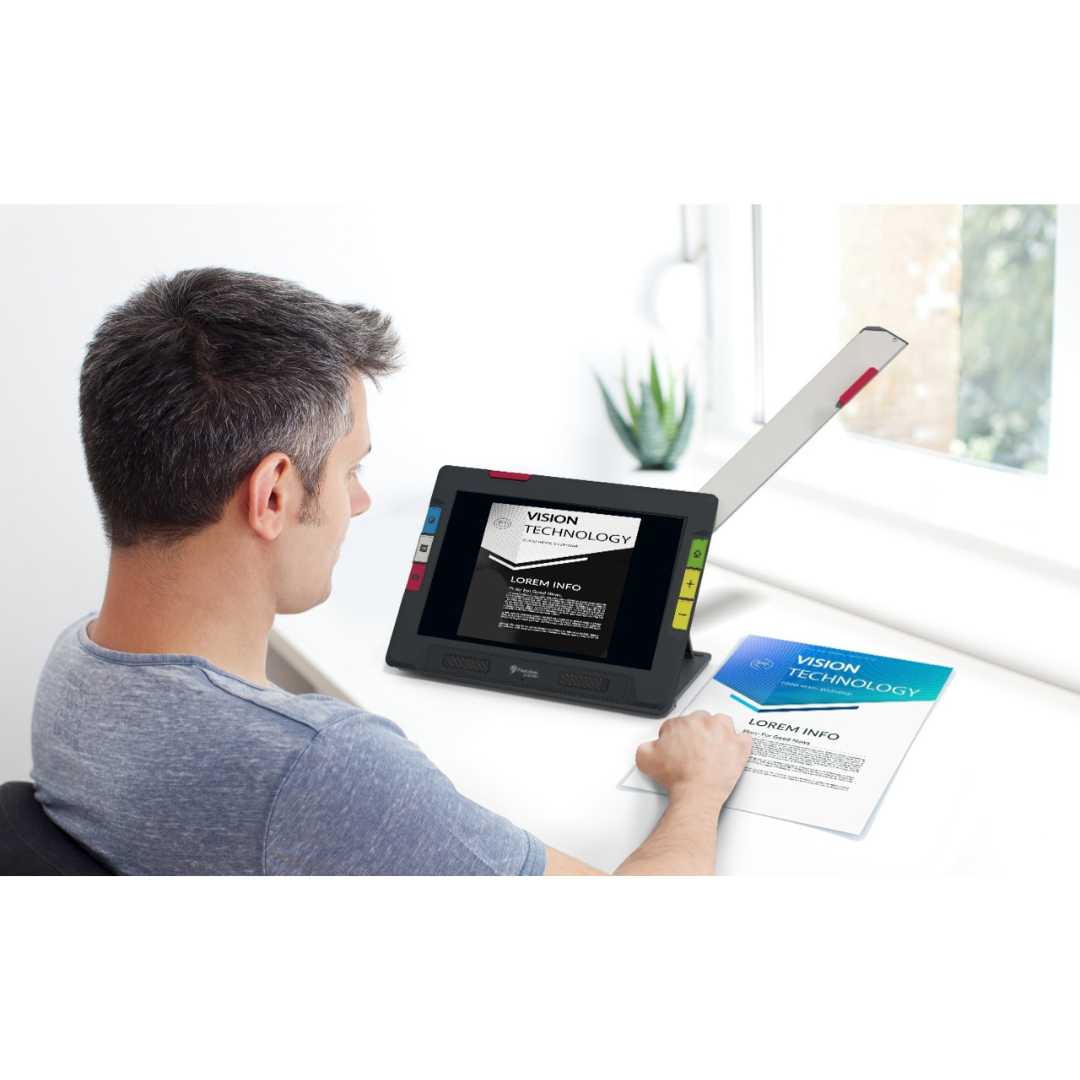Freedom Scientific Ruby 10 Video Magnifier with 10 Inch Touchscreen
Freedom Scientific Ruby 10 Video Magnifier with 10 Inch Touchscreen
Share
SKU:900852-007
Hurry, only 4 left in stock
Couldn't load pickup availability
We accept






The RUBY 10 video magnifier has a 10-inch touchscreen and three dedicated cameras. The RUBY 10 can magnify letters, magazines, labels, and photos. The swing out arm allows you to view items in your hand and write. When extended, the arm also enables full-page OCR. With a touch of a button, you can scan pages and have them read aloud to you. The third camera is dedicated to seeing objects at a short distance such as signs and menus on a wall.
The RUBY 10 video magnifier has a 10-inch touchscreen and three dedicated cameras. The RUBY 10 can magnify letters, magazines, labels, and photos. The swing-out arm allows you to view items in your hand and write. When extended, on the speech model, the arm also enables full-page OCR. With a touch of a button, you can scan pages and have them read aloud to you. The third camera is dedicated to seeing objects at a short distance such as signs and menus on a wall.
*RUBY 10 is available with and without Speech
Features:
- Available with and without Speech
- Magnify from 2X to 24X
- Touchscreen and tactile buttons
- Portable and lightweight
- Magnify small objects and fine print
- See objects at a short distance
- Connect an external display via Miracast or USB
- Save scanned images and documents
- Scan and read full-page documents (Speech model)
- Connect a headset to listen to documents privately (Speech model)
- Carrying case and screen cleaning cloth included
- 3.5 hours continuous use and 4 hours charging time
- 10.28 x 7.44 x 1.42 in. (261 x 189 x 36 mm)
- 2.02 lbs. (915 g)
- Click Here to download the User Guide
Unique, Patent Pending Viewing Modes
- ColorSight+™ color blindness enhancements which shift specific colors to assist color differentiation in real-time. These filters are intended to improve contrast for protanopia (color blindness to red), deuteranopia (color blindness to green), and tritanopia (color blindness to blue).
- GlareGuard™ attempts to maximize comfort during long-term use by minimizing pain from light sensitivity. This feature reduces the wavelengths of light associated with such pain. It is designed to achieve comfort while maintaining luminance and contrast levels acceptable to the user. Although we believe every eye condition can benefit from this feature, it is highly recommended for macular degeneration and retinitis pigmentosa.
- EdgeScribe™ edge enhancement modes attempt to improve object recognition by removing visual clutter.
- Edge enhancement makes the edges of objects in an image stand out against the background.
- Edge-only mode removes colors, only showing the lines and edges of objects in view.
- Edge smoothing reduces visual noise in high-contrast modes.
- Aptiview™ algorithm dynamically adjusts the contrast in different parts of the image, which could improve the viewing experience in more lighting conditions than previously possible.


